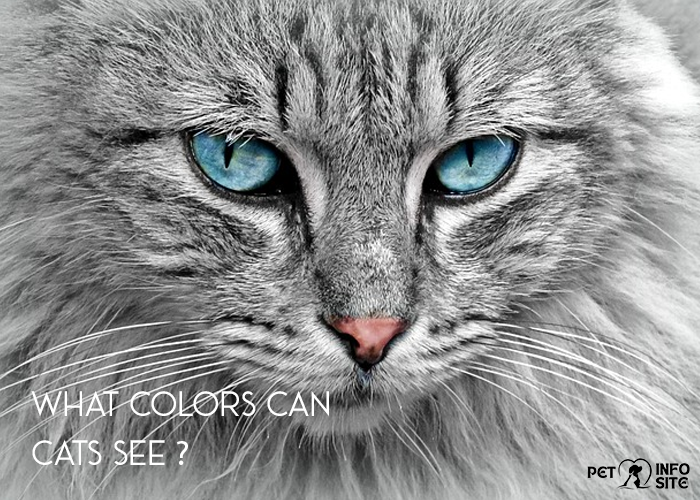Introduction to Cat Vision
Cats, with their mysterious and enigmatic behaviors, have long fascinated humans. One aspect of their physiology that intrigues many is their vision. Understanding what colors can cats see offers valuable insights into their perception of the world around them.
| What Colors Can Cats See |
| Blue and violet |
| Yellow and green |
| Reds and oranges |
| Motion |
| Natural environment |
| Lighting |
| Enhanced night vision |
| Health |
| Age |
| Harsh products |
| Gentle cleaning |
| Limited color vision |
| Observation |
Cats can see a wide spectrum of colors, however, they can see only in the limited range from which humans do. It is very important to know what colors cats can or can’t see since they help ensure that cats are given the right care and environment. This is a summary of the colors that cats can see and the other aspects that may affect their perception of visual.
Blue and Violet: Cats can see in blue and violet shades as well. These colors are the first visible colors for them in their visual spectrum.
Yellow and Green: The cats also can tell the differences between the yellows and the greens; however, the sharpness of their perception may not be as keen as that of humans.
Reds and Oranges: When it comes to green and blue colors, cats can see these colors more clearly than red and orange. But, to a cat, these colors may seem less defined and muted.
Motion: Cats are very savvy when it comes to motion and can pick up on even the slightest movements, making them top predators in the wild.
Natural Environment: The hues constituting the ecological surroundings, for instance, leaves and prey, have a notable impact on the visual perceptions of cats.
Lighting: The light conditions of the environment affect the cat’s visual impression. They have reduced size of their eyes in comparison with us, but they have compensated for it by developing adaptations for low-light vision.
Enhanced Night Vision: Cats have a tapetum lucidum or a reflective layer behind their retinas as a special feature that allows them to have superior night vision.
Health: Factors such as a cat’s overall health may reduce its visual acuity. Routinely visiting the vet is a prime necessity for keeping the eye health of a pet optimal.
Age: With their age, cats vision may deteriorate, which may result in the diminished range of their color perception and other visual objects’ detectability.
Harsh Products: Consequence of the use the tough cleaning products or chemicals could probably cause cats eyes an effect leading to their inability to see.
Gentle Cleaning: To be safe for cats vision, it is recommended that when disinfecting areas where cats go, only soft and pet-friendly cleaning products are used.
Limited Color Vision: Cats have dichromatic vision, meaning they perceive the world in a narrower range of colors compared to humans.
Observation: Observing your cat’s behavior and responses to different colors and stimuli can provide valuable insights into their visual preferences and capabilities.
Understanding the colors cats can see and how their vision functions is crucial for creating a safe and stimulating environment for our feline companions. By considering their unique visual abilities, we can better cater to their needs and enhance their overall well-being.
Understanding Cat Vision: How it Differs from Humans

Structure of Cat Eyes
Cat eyes are not only wonders of evolution but also hunting tools and survival gears adaptable to various conditions of nature. Their eyes are specialized organs that can function well in low light conditions.
Rods and Cones: The Key to Understanding Vision
The same as humans, cats have photoreceptor cells in their retinas, called rods and cones. Nevertheless, the disposition and density of these cells are not uniform which, in turn, contributes to a specific type of their vision.
The Color Vision of Cats
Limited Color Spectrum
This is not the case for cats, which have only dichromatic vision. In other words, cats can discern only the two principal colors: red and green. This implies that they are equipped with two types of cones. As a result, they can perceive a much wider spectrum of colors.

Dichromatic Vision
Feline vision utilizes rod cells for low light conditions. They are wired to be most responsive to blue and green shades, but they lack some cone types that are needed for total red wavelength perception.
Perception of Colors: What Color Cats Can See
Theoretically, cats’ eyesight is similar to people’s red-green color blindness. They can differentiate between some colors; however, the problem can arise, for instance, when it comes to shades of red and green.
The Factors That Influence the Way Cats See Color
Lighting Conditions
Cats eyes can change shape to give different degrees of sharpness in various lighting conditions. They have a structure which is located behind their retina called the tapetum lucidum, which give them better vision at night.
Cat Breeds and Genetics
Genetics are the dominant genotypic factor that governs a cat’s color vision. Some breeds may have changes in their Cone cells and thus view the colors differently.
Age and Health Factors
In older cats or in those that develop certain health problems, for example cataracts, the vision may be hindered to some extent making them unable to distinguish between colors accurately.
Common Myths About Cat Color Vision
Cats See Only in Black and White
Contrary to popular belief, cats are unable to distinguish colors in the same way as humans do. They only see the world in terms of black and white, and they cannot discern the different shades of gray that we take for granted. In contrast to the commonly held belief, cats are not lacking in color vision. Although they do not have such a vibrant color vision as humans, they can still distinguish a handful of them.
Cats Cannot Distinguish Colors
In contrast to humans, cats do not perceive the world with the same bright colors, however, they can distinguish between different shades and colors even if they may have some limitations.
Practical Implications of Cat Color Vision
Impact on Toy Preferences
Getting a better handle on how cats perceive color can aid pet owners in deciding what toys and accessories to buy for their visually stimulating cats.
Understanding Cat Behavior
Because cats can distinguish color, owners can easily understand what their pets are feeling and what they prefer throughout their interactions, thus promoting welfare.
Summary
In conclusion, cats have developed their own adjusted vision as they adapted to their environment, although they do not see a rainbow of colors in the same way humans do. Through exploring the cat’s color vision in detail, viewers will gain a deeper understanding of the interesting nature of these animals and the peculiarities of their sensory world.
Explore more fascinating insights about your furry friends on our pet info site.
FAQs about What Colors Can Cats See
The physiology of cats’ eyes and the presence of the tapetum lucidum reflect light into their retina, resulting in their extraordinary night vision.
Cats can see blue, violet, yellow, and green colors, but their perception of reds and oranges is limited.
No, it is not that cats are color blind. Their color vision, instead, is more limited than that of humans. They can see in color but sometimes red and green color variations may be difficult for them.
Cats possess a greater sensitivity of cone cells to blue and green than they do to other colors and, as a result, cats can see these colors more clearly than others.
Cats can see movement on TV screens due to their high flicker-fusion rate, but they may not perceive images in the same way humans do.
While cat breeds with different coat colors may have variations in their vision, coloration primarily affects their appearance rather than their visual capabilities.






